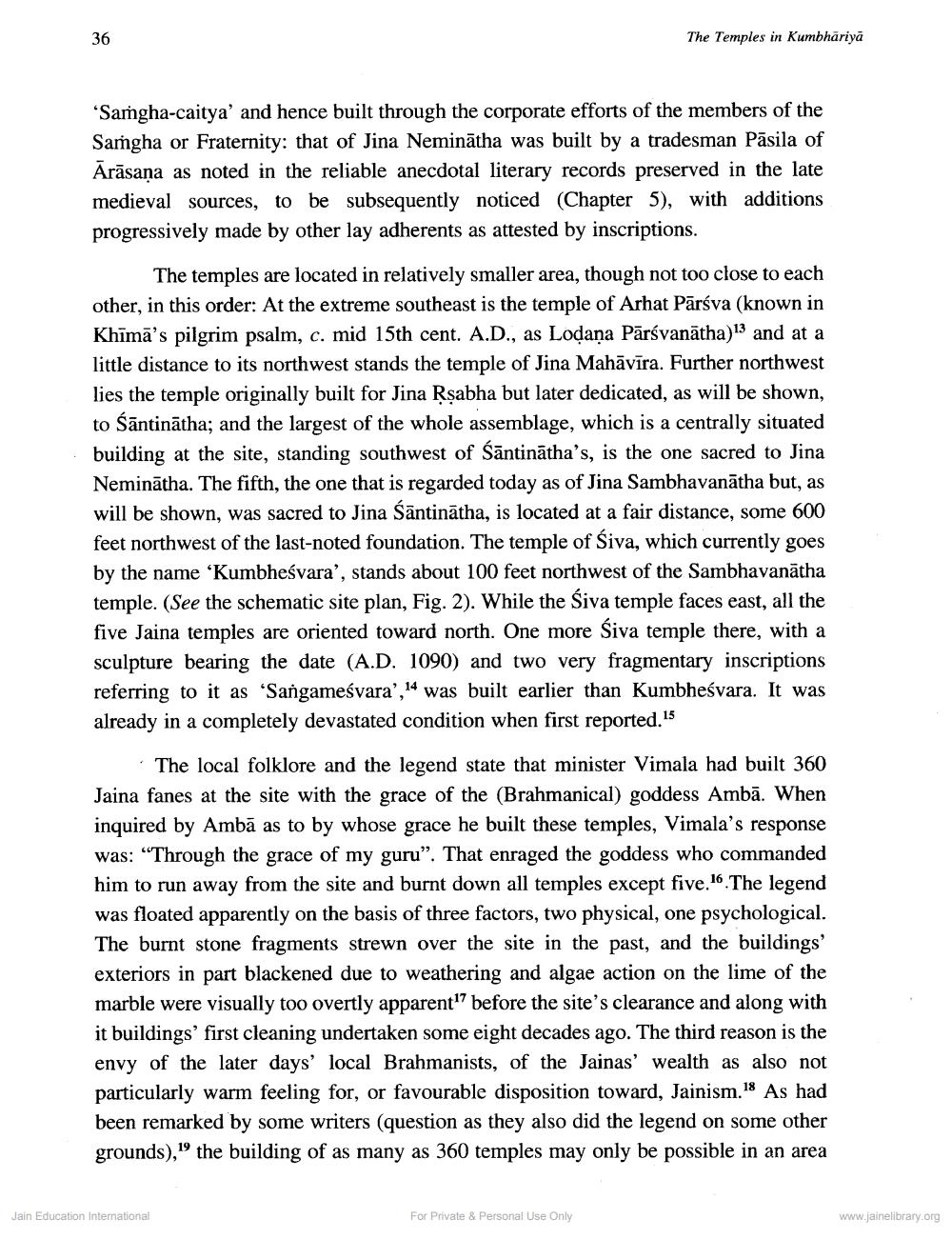________________
The Temples in Kumbhariya
'Samgha-caitya' and hence built through the corporate efforts of the members of the Samgha or Fraternity: that of Jina Neminātha was built by a tradesman Pāsila of Ārāsaņa as noted in the reliable anecdotal literary records preserved in the late medieval sources, to be subsequently noticed (Chapter 5), with additions progressively made by other lay adherents as attested by inscriptions.
The temples are located in relatively smaller area, though not too close to each other, in this order: At the extreme southeast is the temple of Arhat Pārsva (known in Khīmā's pilgrim psalm, c. mid 15th cent. A.D., as Lodaņa Pārsvanātha)13 and at a little distance to its northwest stands the temple of Jina Mahāvīra. Further northwest lies the temple originally built for Jina Rsabha but later dedicated, as will be shown, to śāntinātha; and the largest of the whole assemblage, which is a centrally situated building at the site, standing southwest of Sāntinātha's, is the one sacred to Jina Neminātha. The fifth, the one that is regarded today as of Jina Sambhavanātha but, as will be shown, was sacred to Jina sāntinātha, is located at a fair distance, some 600 feet northwest of the last-noted foundation. The temple of Śiva, which currently goes by the name ‘Kumbheśvara’, stands about 100 feet northwest of the Sambhavanātha temple. (See the schematic site plan, Fig. 2). While the Siva temple faces east, all the five Jaina temples are oriented toward north. One more Siva temple there, with a sculpture bearing the date (A.D. 1090) and two very fragmentary inscriptions referring to it as 'Sangameśvara', 14 was built earlier than Kumbheśvara. It was already in a completely devastated condition when first reported. 15
The local folklore and the legend state that minister Vimala had built 360 Jaina fanes at the site with the grace of the (Brahmanical) goddess Ambā. When inquired by Ambā as to by whose grace he built these temples, Vimala's response was: “Through the grace of my guru”. That enraged the goddess who commanded him to run away from the site and burnt down all temples except five 16 The legend was floated apparently on the basis of three factors, two physical, one psychological. The burnt stone fragments strewn over the site in the past, and the buildings' exteriors in part blackened due to weathering and algae action on the lime of the marble were visually too overtly apparent" before the site's clearance and along with it buildings' first cleaning undertaken some eight decades ago. The third reason is the envy of the later days' local Brahmanists, of the Jainas' wealth as also not particularly warm feeling for, or favourable disposition toward, Jainism.18 As had been remarked by some writers (question as they also did the legend on some other grounds)," the building of as many as 360 temples may only be possible in an area
Jain Education Interational
For Private & Personal Use Only
www.jainelibrary.org




